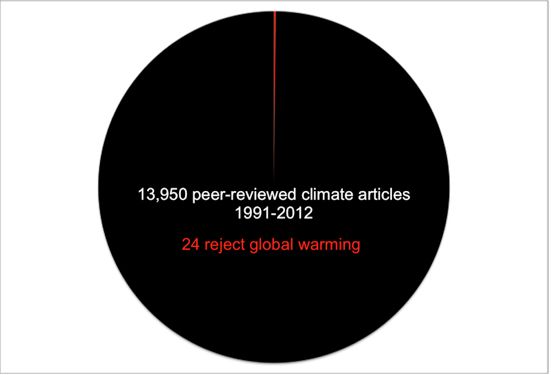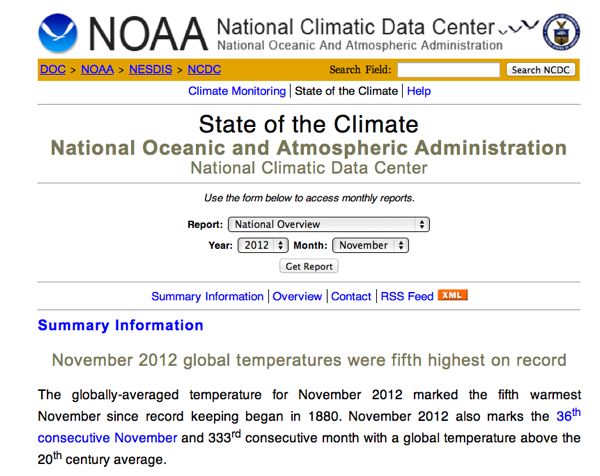[Update: 1/5/13: Bill McKibben was asked point blank about the Tittel spun reason for Jackson’s departure. Watch him dismiss it. Below is the transcript, but watch the video, it is more revealing – McKibben was very uncomfortable and he clearly refused to validate that story. McKibben led the XL Pipeline protest movement, so he would know if Jackson really cared:
AMY GOODMAN: Bill, I want to ask you something, since you raised Keystone XL. Do you think the announcement by Lisa Jackson of her retirement or her resignation from Environmental Protection Agency is partly due to her opposition to moving forward with Keystone XL?
BILL McKIBBEN: I don’t know. Look, the Keystone thing has been, for me, sort of crazy from the beginning, Amy. The 20 most important climate scientists in the U.S. all wrote the president a letter saying this is not in the country’s national interest. Our most important climatologist, James Hansen, said if you burn all that tar sands oil on top of everything else that’s being burned, it’s game over for the climate. We have indigenous people from one end of the continent to the other now powerfully, in this Idle No More movement, pointing out that tar sands is a perfect example of the sort of exploitation they’ve had to live with for hundreds of years. There’s no reason to do this, except that it helps rich oil men. And I can’t, for the life of me, understand why it’s been so hard to block it. We’ve done everything we can think of. We were able to delay it for a year with the largest civil disobedience action in 30 years in this country. Let’s hope that we can keep the pressure on. That’s what this President’s Day thing is all about. And if you go to 350.org, you’ll see the—all the information you need about how to get there and be a part of it.
[Updates below]
I never thought I’d praise the NY Times’ coverage over an alternative media/blogosphere story driven by Jeff Tittel.
But, surprisingly, the Times gets the story far better – the lede is suggestive:
Lisa P. Jackson is stepping down as administrator of the Environmental Protection Agency after a four-year tenure that began with high hopes of sweeping action to address climate change and other environmental ills but ended with a series of rear-guard actions to defend the agency against challenges from industry, Republicans in Congress and, at times, the Obama White House.
The most important measures of effective leadership at EPA are to push back – publicly – against the politics, to advocate the science and law, and to defend the integrity and independence of EPA as a regulatory agency. Without them, the policy agenda is doomed.
Jackson failed badly on all those fronts. And it is not the first time, but part of a sad pattern I’ve personally been involved in and watched for many years.
So, I gotta say that I just threw up in my mouth after reading Jeff Tittel’s quote in a story on Lisa Jackson’s resignation: (from Buzzfeed Politics – a rag that should be called Bullshit Politics)::
Jackson “left as a matter of conscience,” said Jeff Tittel, the director of New Jersey’s Sierra Club chapter and a longtime friend of Jackson’s. The EPA Administrator “has too much principle to support [the pipeline], between the climate impacts of it and the water quality impacts of it.”
A “matter of conscience”? Jackson had “too much principle”?
Are you kidding me? On its face, that doesn’t pass the straight face test. Maybe Jeff is too close a friend to be credible (especially after this glowing endorsement).
[Note: I especially liked this pathetic sycophantic Tittel apologia, concluding with this alliterative attack, attack, defending his BFF Lisa:
“Her critics are the naderite nabobs of negativity,” said Tittel. “They are part of the loony lemming fringe of the environmental movement.”
And then there are similar Obama global warming and water quality policy issues -each itself worthy of resignation – that didn’t seem to bother Jackson’s conscience or principles for the last 4 years, things like promoting fracking, failure to stop mountaintop mining, and pushing for more off-shore drilling (just weeks before the BP Gulf blowout), all of this while bragging about record oil/gas/coal production. Or the Climate Sellout at Copenhagen, or cooling tower collapse, failures on coal ash and impoundment regulation, huge industry sponsored loopholes in greenhouse gas air regs(e.g. “Tailoring rule” or new power plant NSR), or The Regulatory Tsunami That Wasn’t, expanding industry access and influence on rule making by cutting deals behind closed door meetings at OIRA, a record level of attacks on whistleblowers, failure to deliver on scientific integrity, et cetera (see more here).
Jackson had “so much principle” that she loyally served a complete 4 year term and just couldn’t manage to mention the issues that purportedly troubled her conscience so much that she had to resign.
How does one get praise for resigning in principle without even taking a public position on the issue? (read her resignation statement where she praises Obama and keeps her “conscience” and “principles” to herself).
Just last week, Mike Catania praised Jackson as a “loyal soldier”. Mike was on to something, because Jackson’s own resignation statement is that of a loyal soldier, not a conscientious objector or principled public servant following her conscience.
[Prequel: quote from Star Ledger story, Jan 18, 2009 sounds familiar:
We needed someone who was going to fight for environmental policies based on sound science. What we got was a soldier for Corzine.” Bob Spiegel, Edison Wetlands Association (discussed in my NJ Voices blog post “Soldier for Obama? Or Environmental Regulator?“)
And how do you go from “loyal soldier” to “too principled” in just one week?
While I disagreed with Catania‘s take, I did not take issue with the basic truth of his characterization.
To me, what Catania values in Jackson as a “loyal soldier” willing to “take one for the team” are not characteristics of leadership, integrity, and independence needed of a EPA Administrator (see Ruckelshaus), but evidence of flaws that I criticized in Jackson’s NJ tenure, when we opposed her EPA nomination as a “pliant technocrat” (see: Why Lisa Jackson Should Not Run EPA):
“In our experience, Lisa Jackson is cut out of the same professional cloth as the current administrator, Stephen Johnson – a pliant technocrat who will follow orders,” Ruch added. “If past is prologue, one cannot reasonably expect meaningful change if she is appointed to lead EPA.”
(for details, see also: Ten Questions the Senate Should Ask Lisa Jackson]
Hate to say it, and wish we were wrong, but the record shows: we told you so.
She showed that multiple times as DEP Assistant Commissioner for Enforcement (full disclosure: I had first hand personal experience, observing Jackson from within the DEP Management Team from 2002-2004); as DEP Commissioner from 2006-2008 and as Gov. Corzine’s Chief of Staff.
Let me offer just one example that captures the essence – just one:
Jackson trained as a chemical engineer, receiving a Master’s degree from Princeton. Her first job after college was with a Washington DC beltway chemical industry funded “think tank”, working on Superfund “reform”. She left that job to work for EPA in the Superfund program. So, Jackson was well versed in the cleanup program.
On October 23, 2006, after multiple cases of lax regulatory oversight were exposed in media coverage and legislative oversight hearings on the DEP toxic site cleanup program, DEP Commissioner Jackson was called before the Senate Environment Committee to propose reforms (see this for her full Senate testimony) –
Jackson’s primary point was that DEP’s power and role had to be strengthened, because the law had been weakened over time, amended to give too much power and control over cleanups to the private sector. Jackson testified:
First, we need to provide the DEP with a greater role in the selection of remedies at sites. […]
With the changes in ISRA enacted at that time, the remedy selection process was put in the hands of those charged with the actual cleanup, whether they are third party developers or responsible parties. The DEP was precluded from denying approval for the remedy selection unless we could demonstrate that the remedial action was not protective of the environment or public health. It is very hard to prove that capping contaminated sites which eliminates the risk of exposure is “not protective” even if the contaminants below the cap are at high levels.
Many would argue that the downside of those amendments is that quality of the remediations is poor – contaminated materials left under a cap that could erode and that developers pursue the cheapest solutions in order to quickly get a profit from the property they remediate. Although these types of remedial action require institutional and engineering controls, which is most often a cap and a deed notice, long term maintenance and monitoring of the effectiveness and integrity of these controls as the property is transferred is problematic. The use of these caps by developers and the subsequent transfer of responsibility for their upkeep have become so prevalent that a slang term of art has been developed and they are known as “pave and waves.”
But shortly thereafter, bowing to political pressure, Jackson did a complete U-Turn capitulation.
She went from advocating the strengthening of cleanup laws to increase DEP’ role in order to stop “poor cleanups” driven by shortsighted real estate development profits, to calling for the total privatization of the DEP cleanup program.
Jackson went from seeking more DEP control in order to prevent abuses by greedy developers, to supporting a new law to give private consultants paid by those same greedy developers 100% control over the complete cleanup process, with no DEP oversight.
When this NJ record was probed by US Senate Environment Committee Chair Barbara Boxer during her EPA confirmation hearing, Jackson dissembled. Upon close questioning, Jackson repudiated her prior NJ privatization advocacy and pledged that she would NOT bring privatization to EPA cleanup programs.
(read the excerpts of the Boxer exchange on NJ LSP program from Jackson’s confirmation hearing here – with links to full transcript).
So, she was against privatization, then she championed it, then she opposed it. Real principle and conscience operating there.
But of course, as that sage and bastion of political credibility Dave Pringle reminds us in the Star Ledger story, it was never Lisa’s fault, On No! It was always all Jackson’s boss’ fault – from DEP Commissioner Brad Campbell, to Gov. Corzine, to President Obama.
“Overall she did a great job,” David Pringle, a lobbyist for the New Jersey Environmental Federation, said. “And the vast majority of places she didn’t it was due to circumstances beyond her control, primarily her bosses – the governor and the president — overruling her.”
Not only did the media get the politics wrong, but they got the policy history wrong as well.
Jackson was no champion of regulating greenhouse gas emissions. Just the opposite.
[Under Commissioner Brad Campbell], the NJ DEP adopted regulations that defined greenhouse gases as air pollutants under State law in 2005, before the US Supreme Court directed Jackson’s EPA to do the same thing (i.e. the Court essentially mandated that EPA issue the Clean Air Act “endangerment finding” that Jackson boasts as an accomplishment. First, that finding was mandated by the Supreme Court, but, more importantly, while at EPA, Jackson never implemented regulatory controls on existing emission sources that would produce ANY reductions. So, that is hardly something to brag about).
While Jackson was Commissioner of NJ DEP, she did nothing to implement this regulatory authority. Instead of regulation of emissions, Jackson supported a market based approach under the Regional Greenhouse Gas Initiative. (RGGI). Worse, she negotiated and signed off of a weak RGGI agreement (cap 30% above then current emissions) and a weak loophole riddled piece of state legislation implementing the regional agreement.
So, there you have it.
Hey Dave: if Corzine was the problem, why did Jackson leave DEP Commissioner job to go work for him as Chief of Staff?
If Obama was the problem – and Jackson had “too much principle” to stay and was following her conscience – why did she never criticize the Obama policies or mention them in her resignation statement?
I’ll tell you why – because she didn’t want to face the harassment of a House investigation into her private email abuse and because she is a loyal soldier who looks out for #1 – the classic careerist pliant bureaucrat.
[Update #1 – And here’s a plausible angle on the story that hasn’t been spun:
Suppose this is more like the “thrown under the bus” cases of Susan Rice and Van Jones – as I suggested in a prior post – and Obama doesn’t want to waste any of his second term fiscal cliff political capital in a protracted and embarrassing battle with House Republicans over Jackson’s secret email abuse.
That is plausible, no?
[Update 1.1 – 12/30/12 – here’s the right wing view, aspects of which with I agree, so it is clearly plausible: “Richard Windsor’s” Departure from EPA ia a Victory for Transparency
[Update #2 – the Bergen Record story reports these Jackson accomplishments as DEP Commissioner:
In New Jersey, Jackson wrote the state’s climate-change laws and developed an energy master plan as commissioner of the Department of Environmental Protection.
First of all, the Corzine Energy Master Plan was written and adopted by BPU, not Jackson and DEP.
And they left out the fact the the “state’s climate change laws” Jackson negotiated were first, the Global Warming Response Act, which I wrote about in this Star Ledger Op-Ed: No Teeth in “Tough” Pollution Law:
The law — contrary to widespread media coverage — does not legally cap greenhouse gas emissions or mandate emissions reductions on any major pollution sources. As a result, the law’s theoretically “mandatory” goals are unenforceable and therefore a fiction. They amount to the same voluntary approach backed by the Bush administration.
The other law Jackson negotiated was the Regional Greenhouse Gas Initiative bill – a law I’ve criticized numerous times and even the RGGI program’s backers recently just admitted was seriously flawed.
Of course, the Record story also fails to tell readers that Jackson did nothing with her regulatory power while at DEP to regulate GHG emissions – nothing at all – and instead supported a market based alternative to regulation.
But, reporters and stories are only was good as their sources – and in this case, the reporter was reliant on friends of Lisa for the facts she got so wrong.












